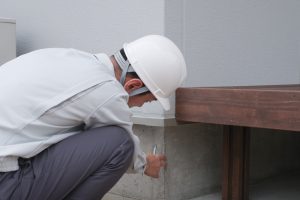Bed Bug Control Tips You Should Know

Despite their clear name, bed bugs don’t have a sense of propriety. They can hide away in your bed and other items in your bedroom. Note that these bugs are tiny and opportunistic. They can easily migrate in luggage, clothes, purses, and different kinds of fabrics to anywhere they can find food. And that sought after source of food is you.
If you suspect that your couch and other favorite pieces of furniture have hidden bed bugs, consider contacting a professional pest control company to inspect your home for pests and take the proper steps to exterminate them. Here are essential steps to take if you suspect bed bugs in your house.
How to know if there are bed bugs in your home
In case you have noticed itchy welts on your skin, or your loved ones have complained about this problem, there is a possibility of bed bug infestation in your home. Other signs there are bedbugs in your home include specks of blood on your upholstery fabrics or your clothes. Sometimes, if you are careful enough, you can spot them.
Note that these creepy little animals are tiny about the size of an apple seed. Besides, juvenile bugs are even smarter and know when and where to hide. Here’s how to identify bed bugs before they become a bigger problem.
1. Mystery Bites? Time to Play Detective
Waking up with itchy red welts in a straight line or cluster? Classic bed bug calling card. They love exposed skin—arms, legs, neck—basically anywhere you’re not buried under blankets. But here’s the kicker: some people don’t react to bites at all. So if your partner is scratching like crazy and you’re bite-free, don’t celebrate just yet.
2. Your Sheets Are Telling a Horror Story
Check for:
🔴 Rust-colored blood smears (from squished, well-fed bugs)
⚫ Tiny black dots (aka bed bug poop—gross, but a dead giveaway)
If your mattress looks like it’s been part of a crime scene, Houston, we have a problem.
3. That Weird Smell Isn’t Your Forgotten Gym Clothes
A heavy infestation can make your room smell like a musty locker room mixed with overripe berries. If your bedroom suddenly has a funky, unexplained odor, it’s time to start investigating.
4. Ghosts of Bugs Past (Shed Skins & Eggs)
These little vampires molt as they grow, leaving behind creepy translucent shells. You might also spot tiny white eggs (think poppy seed-sized) hiding in mattress seams, furniture cracks, or even behind peeling wallpaper.
5. The Ultimate Test: Catching Them Red-Handed
Adult bed bugs are reddish-brown, apple-seed-sized, and fast. They love hiding in:
✔ Mattress seams & box springs (their favorite Airbnb)
✔ Bed frames & headboards (prime real estate)
✔ Baseboards & electrical outlets (because why not?)
Grab a flashlight and play exterminator for a night—check these spots thoroughly.
Tips to Prevent or Control Bed Bugs
Now that you’ve confirmed these uninvited bloodsuckers are in your home, it’s time to lock down, trap, and destroy them before they multiply. Follow these steps to fight back:
1. Suck Them Up with a Vacuum (Literally)
Run your vacuum over every possible hiding spot:
- Mattress seams, bed frame, and headboard
- Dressers, nightstands, and furniture cracks
- Electronics, baseboards, and carpets
Seal the vacuum bag/dirt in a plastic bag and toss it outside immediately—don’t let them escape!
2. Lock Infested Items in Plastic Jail
Seal clothes, linens, and fabrics in airtight plastic bags until you can wash them.
If you can’t wash right away, heat is your best weapon:
- Wash on the hottest water setting, then dry on high heat for at least 30 mins.
- For non-washable items (shoes, bags), tumble in the dryer alone on high heat to fry the bugs.
3. Launder Like Your Sanity Depends on It (Because It Does)
Gather all washable items (clothes, bedding, curtains) and blast them with hot water + high-heat drying.
This kills eggs, nymphs, and adults—don’t skip the dryer!
4. Attack What Can’t Be Washed
Upholstery, rugs, and furniture? Vacuum aggressively:
- Flip furniture over to hit every crevice.
- Use attachments to suck bugs out of seams and folds.
Empty the vacuum into a sealed bag and throw it in an outdoor trash bin—far from your home!
5. Isolate & Protect Clean Items
Store treated clothes in sealed bins or bags to prevent re-infestation.
Keep your bed pulled away from walls and use mattress encasements to trap any stragglers.
Act Fast—Bed Bugs Spread Like Gossip!
The longer you wait, the worse it gets. Clean, heat-treat, and seal everything to stop these pests in their tracks. And if the infestation’s bad? Call a pro ASAP—sometimes DIY just isn’t enough.
6. Freeze What You Can’t Heat
Small items like shoes, books, or delicate fabrics? Seal them in a bag and toss in the freezer for 4+ days (-17°C/0°F kills all life stages). After freezing, immediately transfer items to sealed plastic bins to prevent re-infestation.
How to Do It Right:
Seal items in airtight plastic bags first (no escapes!)
Set freezer to -17°C (0°F) or colder
Leave for minimum 4 days (eggs take longest to die)
For thick items (books, shoes), extend to 1 full week
7. Steam Clean Like a Pro
Bed bugs hate heat more than you hate discovering them. A high-quality steam cleaner is one of your most effective tools – here’s how to use it like an exterminator:
Pro tip: Move slowly—steam needs contact time to kill.
8. Diatomaceous Earth: The Ninja Dust
Sprinkle this food-grade powder in:
- Bed frame joints
- Behind baseboards
- Under furniture
Works by drying bugs out (takes 1-2 weeks but lasts months).
8. Interceptors = Early Warning System
Place climb-up traps under bed legs to:
- Catch wandering bugs
- Monitor infestation levels
- Prevent them reaching you
9. Beware the “Bug Bomb” Scam
Foggers drive bugs deeper into walls—making the problem worse. Stick to targeted sprays (like crossfire) if going chemical.
10. Hire a professional
Generally, DIY bed bug control is never a good idea. Bedbugs multiply very fast and are good at hiding and evading extermination. These are the two aspects that make bed bug extermination more challenging even for some professionals. Therefore, when hiring a bug control company, consider checking their reputation, the extermination methods they use, and their overall experience.
Note that bed bugs can linger in curtains, carpets, and wallpaper seams. That means chemical treatment with the right insecticides is always needed. These chemicals are better handled by a professional. The professionals can also help with the installation of receptors to prevent the bedbugs from crawling into your furniture. In the long run, professional bug control is better than the DIY option.






